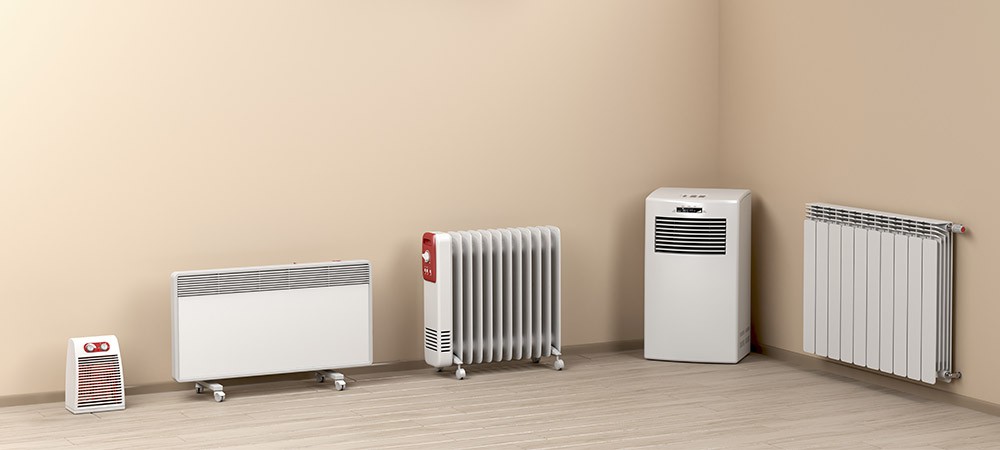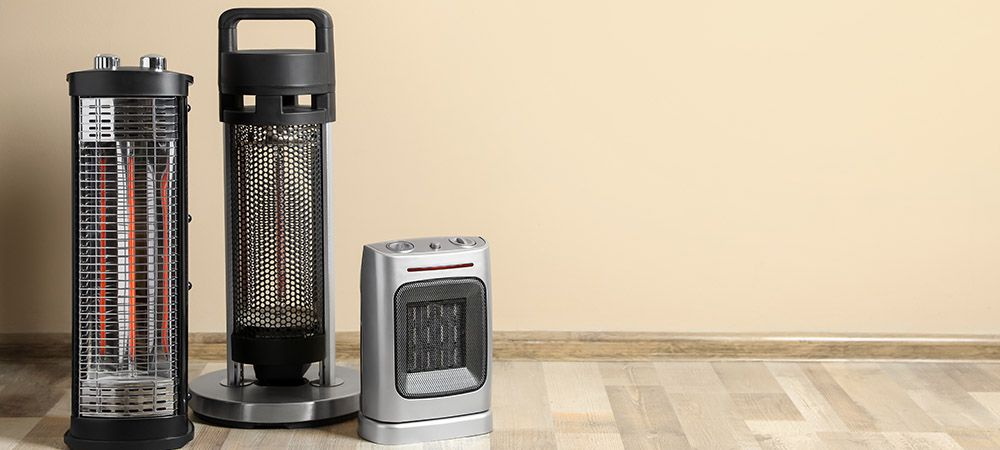Winter is coming. No, we’re not narrating a scene from Game of Thrones. Instead, we’re referring to actual seasonal change.
How are you preparing for the cold months? For most Canadians, the go-to is an efficient heating system. Preferably, you want to purchase an electric room heater. The good news is we know some of the cheapest around.
The thing we love about electric heaters is how they’re suited to isolated heating. Electric room heaters are great for raising the temperature in individual rooms. They essentially eliminate the need to fire up your home’s central heating system all the time. This flexibility allows you to save energy. In a way, using electric heaters presents a cheap way to heat a room while saving energy.
However, there are numerous types, brands, and examples of electric heaters. As such, picking the right one can be tricky. More importantly, you need to consider your budget when shopping for these appliances.
Here, we’ve put together a list of some of the cheapest electric room heaters available in the market. Continue down the post to find the best option for you.
Infrared Heaters
Infrared heaters rank high on the most affordable electric room heaters list. This type of heater typically emits a constant gentle heat. The best thing about these electric heaters is not that they’re cheap to purchase. Infrared heaters are incredibly energy efficient. They consume energy slowly and are super affordable to run.
Working Principle of Infrared Heaters
Infrared heaters increase the environment temperature through radiation. This functionality is why people also call them radiant heaters. For context, the earth receives heat from the sun through the same process of radiation. As such, infrared heaters mimic the heating ability of the sun. The only difference between the two is the heat source.
Infrared heaters emit infrared rays, which heat objects in the environment. So, unlike most conventional home furnaces, infrared heaters affect the objects and not the air in a room.
This functional quirk is partly responsible for an infrared heater’s efficiency.
Solids absorb heat faster than other states of matter, and they also dissipate it with the same speed. Plus, when the infrared rays heat the objects, the object, in turn, heats the air and the environment.
Features
- Infrared heaters have a built-in thermostat for automatically regulating heat output.
- They may also have fans for faster heat dissipation
- Infrared heaters also feature quartz bulbs which are their main heating element. The longer the life of the bulb, the better the value of your heater.
- They also have a heating capacity that can comfortably cover 100 sq. ft.
- Heat-resistant exteriors.
Space Heaters
Space heaters are rightly deserving their spot on our list of cheapest electric room heaters. Of course, people also call them room heaters, but we think that’s a bit generic, so let’s go with space heaters.
Space heaters come in two forms, the portable and wall-fitted. They’re suitable for heating small and relatively large rooms. They’re perfect if you’re looking to install an electric heater in clinics and hospital rooms.
Working Principle of Space Heaters
Space heaters have heating elements that directly convert electric energy to heat energy. However, the heat energy can’t circulate fast enough by itself, so they have fans to aid the process.
Then again, space heaters won’t start heating when you turn on the device. Instead, they require a startup duration before reaching the desired temperature level. A regular space heater takes around half an hour to heat a room.
Features
- Space heaters often feature a relatively small design
- They also have built-in thermostats with variable controls for altering the intensity of the heat
- They have inbuilt fans for dissipating heat
- They also have air filters to prevent dirt from getting into the heating compartment.
Oil Filled Heaters
People wrongly imagine old, rusty furnaces when oil-filled heaters enter the conversation. But have you seen any of the new models?
Those appliances are beasts capable of turning up the heat in any room. And the best part is these electric heaters cost relatively low to procure and install.
Working principle of Oil-Filled Heaters
Oil-filled heaters work based on a rather interesting principle. They heat the environment by combining the techniques of thermal convection and radiant heat. When electric currents pass through the heater, the fluid in the appliance absorbs the heat created and flows into a special chamber to heat the cold air.
Diathermic oils have a specific high heat capacity and boiling point. The oil can easily absorb and retain heat; hence it’s appropriate for a heating mechanism. The liquid in oil-filled heaters is a particular type of diathermic oil.
When the electric current passes through the heater, the internal resistor converts it into thermal energy. The oil absorbs the heat, which causes it to expand and flow through the panel. The movement of the oil triggers the radiator, which dissipates the heat through its fins.
The mechanism repeats the process in a cycle until it achieves the desired temperature level in the environment. As such, this type of heater is relatively slow. It typically takes a little while before it reaches the desired temperature level.
Features
- Oil-filled heaters come with internal resistors that convert electricity to heat.
- The diathermic oil in these heaters absorbs and conveys the heat to the radiator.
- They also have radiators that help to distribute heat through the environment evenly.
Related Article: How to Stop Bugs Getting in Through Dryer Vent
Storage Heaters
Also known as heat banks, manufacturers design storage heaters to store up electric energy. They then convert the stored energy to heat energy when needed.
They’re known as storage heaters because of their ability to store electric energy for future use. Contrary to the name, storage heaters are not just for storage spaces. The average homeowner in Ontario can use them in any room they want.
Storage heaters aren’t the cheapest electric room heaters in terms of upfront cost. However, they compensate for that shortcoming in efficiency and energy savings.
These heaters only take energy during hours when the tariffs are cheaper. Then, the storage heater will use the stored energy to work throughout the day like every other heater. This way, they help you to save a lot of money in the long run.
Working Principle of Storage Heaters
Storage heaters function very similarly to most other electric room heaters. The creators designed these heaters only to take energy at night, when the unit cost of electricity is low. Storage heaters store the energy taken in thermal bricks. Its internal furnace converts the electricity to thermal energy on-demand and dissipates it into the environment.
Features
- Inbuilt thermostat for effective heat dissipation
- Very quiet design, they rarely produce any noise
- Durable exteriors
- Cost savings potential by storing up energy during off-peak periods
Ceramic Heaters
Contrary to what the name suggests, ceramic heaters aren’t made entirely of ceramic. Instead, the heaters typically have more plastic and metal components than ceramic parts. The peculiar name stems from the ceramic heating element available in all heaters within this category. When electricity passes into the heater, it charges the ceramic heating element, which heats the air passing around it.
There are primarily two types of ceramic heaters. The most popular of the two is the convective ceramic heaters that work on the principle of convection. They draw in cool air through their base, then pass the air over the ceramic element to heat it before expelling it back into the room.
The other type of ceramic heater works on the principle of radiation. They work similarly to infrared heaters as they directly heat objects in the environment instead of the air. As such, they’re generally known as radiant ceramic heaters.
Working Principle of Ceramic Heaters
A ceramic heater uses an electrically heated ceramic element. This type of ceramic heats up when electric currents pass through it. The heating element used in this furnace is a particular type of positive temperature coefficient ceramic.
Features
- They come with unique PTC heating elements
- They typically come in two types – convective ceramic heaters and radiant ceramic heaters.
- They often have a metal or aluminum frame, which adds to their durability.
- They also have a simple design. So, you can move the units around and operate them efficiently.
Fan Heaters
Fan heaters are also among the cheapest electric room heaters you can get. They’re excellent for small spaces and can heat the environment pretty quickly. However, you may want to consider other options if you intend to deploy a fan heater in a large room. This electric heater type is not the best for large rooms with high ceilings. Plus, they can only remain effective for a short period.
That said, fan heaters have a relatively cheap upfront cost and are also energy efficient. So it won’t cost a lot to buy them, and they’ll also save you money in the long run.
Working Principle of Fan Heaters
Fan heaters use forced conventions techniques to increase the temperature in the environment. I.e., cold air flows into the appliance and passes over the heating element, which heats it. Then, the fan in the heater blows out the warm air into the environment.
The light warm air rises and pushes down cold air, which flows into the heater. Then, the appliance will repeat the process until the entire environment is evenly heated.
Features
- They have a portable design which makes them suitable as mobile units
- They also feature a durable design that minimizes the risks of fire hazards
- Fan heaters all have fans capable of producing a blast of warm air.
Halogen Heaters
Halogen heaters are very similar to infrared panel heaters, so; people tend to mix the two designs. Halogen heaters get their name from the halogen bulbs, their main heating elements. And just like infrared panel heaters, electric currents cause halogen furnaces to produce radiant heat energy.
Generally speaking, halogen heaters are some of the cheapest electric room heaters available. They’re also energy efficient as they only average about 1200w in terms of power output. That way, they also help you save on electricity bills in the long run.
Working Mechanism of Halogen Heaters.
Halogen heaters work on the same principle as infrared panel heaters. The only difference between the two heater types is a slight tweak in their technology. Halogen heaters use ‘near-infrared’ technology to produce strong and directional heat. In contrast, infrared panels use ‘far-infrared’ technology, which disperses heat over a wider area.
However, neither option heats air or works by convection. Instead, both heater types heat objects in space. The objects, in turn, heat the air around them. As such, they’re perfect for places with a lot of draft and areas where it’s difficult to keep the air temperature up.
Features
- They use ‘near-infrared’ technology with halogen-filled bulbs to produce strong, directional heat.
- They’re easily controllable, and you can choose where to heat, so you don’t waste energy heating unneeded areas.
- They have frost protection settings to protect the units from freezing up.
Related Article: Why You Should Never Attempt DIY Appliance Repair
Final Thoughts
There are many different types of electric room heaters you can purchase for your apartment. If you’re thinking, “which heater is the cheapest,” start by evaluating your unique space heating needs.
Don’t opt for an electric room heater simply because it’s the cheapest. Consider each option’s long-term efficiency and energy-saving capability before making a decision.
That said, you may need assistance installing the new electric heater in your apartment. This is where we come in at Prime Appliance Repairs. Simply reach out to us or check out our heater repair and installation service. We’ll help you get your heaters up and running in no time.








